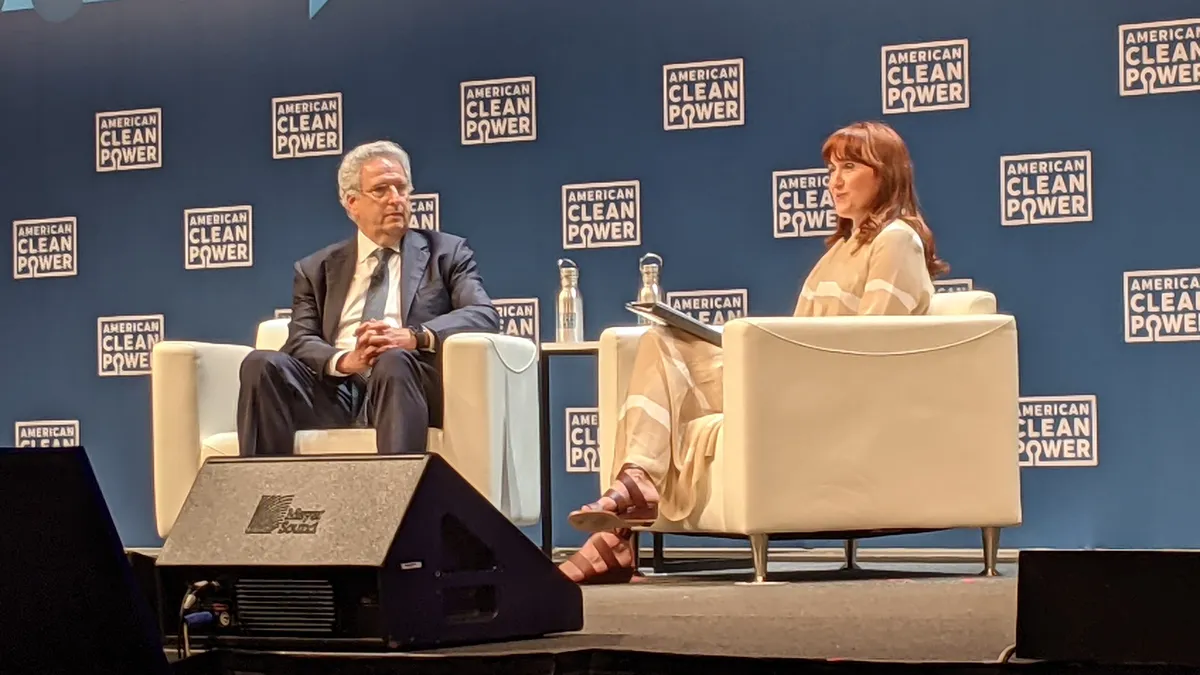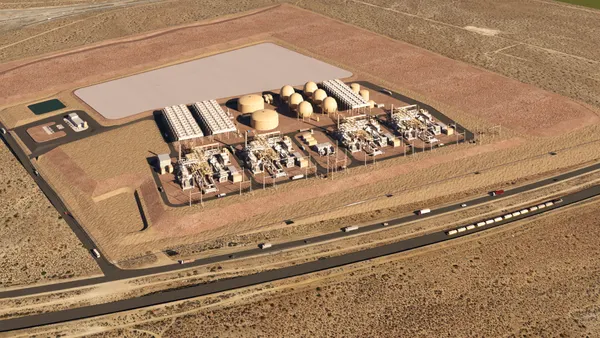Dive Brief:
- Amid other regulatory priorities, Federal Energy Regulatory Commission Chair Richard Glick would have the agency look into energy storage participation in wholesale markets via hybrid projects with wind and solar, he said on Tuesday during the CLEANPOWER 2022 conference in San Antonio, Texas.
- He noted that while FERC requires grid operators to facilitate storage participation in wholesale markets, the effort does not address the role of co-located storage with other generation. Glick, and other speakers at the conference, credited FERC for having "knocked down some of the barriers" for storage and distributed resource participation.
- "Storage provides really an enormous amount of potential benefits that we're not fully utilizing," he told attendees. "We need to address the variability [on the grid] and where we need more flexible generation resources."
Dive Insight:
Already there are a number of dockets open at FERC that are tangential to the role of energy storage, including a requirement for plans from regional transmission organizations, or RTOs, to contend with increasing power variability as more intermittent resources are connected to the grid.
"A couple of weeks ago, we issued an order requiring the RTOs around the country to report to us what their plans are for addressing ... additional variability on the system. I'm very bullish about storage's ability to play a great role in that," Glick said.
Currently, energy storage plays a larger role in California than in other wholesale markets, as the independent system operator deals with a lot of high variability on the grid due to the large amounts of solar power, experts on an energy storage panel said at CLEANPOWER on Tuesday.
In order for energy storage to increase its participatation in other wholesale markets, there needs to be a greater recognition of the resource's resiliency capacities, experts said at the conference. In the regions that are lagging, merchant storage projects are less needed due to lower amounts of intermittent energy on the grid.
"Merchant storage [participation] is following renewable penetration," Michael Arndt, president at Recurrent Energy and panelist at CLEANPOWER, said. "It's all about having enough [variability] to make money and arbitrage."
In the largest wholesale market in the U.S., PJM Interconnection, and the Midwest Independent System Operator, "there just aren't enough renewables there to create" variability, he said, predicting that the markets will get there in the coming years.
As for FERC handling the complexity of energy storage's role, "they really have a hard job," Jeff Bishop, CEO of storage company Key Capture Energy, said during a Tuesday panel at CLEANPOWER.
"There are still some RTOs that model our batteries as if in the most peak hour during the peak day, the batteries will be charging," instead of sending the stored energy to the grid, Bishop said. Such difficulties in defining the role of storage will continue to come up at FERC, he said.
However, as other storage experts commented throughout the conference, there are many applications of energy storage on the grid that are difficult to value and compensate within markets, such as ancillary products. Storage as an ancillary project, for instance, is currently "highly illiquid, very hard to trade," despite being important to the grid, according to Sara Graziano, partner at SER Capital Partners.
"What I’d like to see is... having more liquidly-traded products that are relevant to energy storage," Graziano, a CLEANPOWER panelist, said.
FERC is also seeking compliance filings from RTOs about energy storage participation in wholesale markets, Glick said. But the federal energy regulator must continue to adapt market rules for new uses of energy storage, he added.
For "some of these market rules that were created years ago, no one envisioned solar-storage [developments], or wind and storage for that matter. So we need to figure out what the barriers are and how we can knock those down," Glick said, calling it "one of FERC's most important roles."














